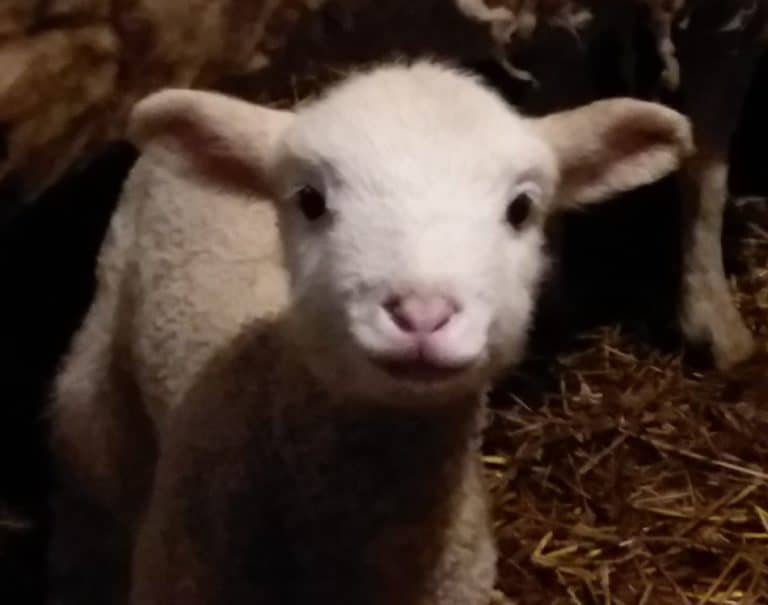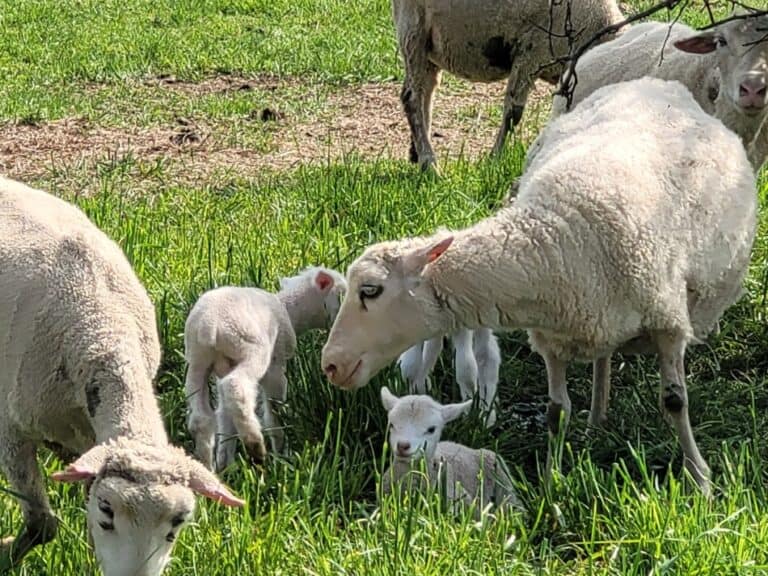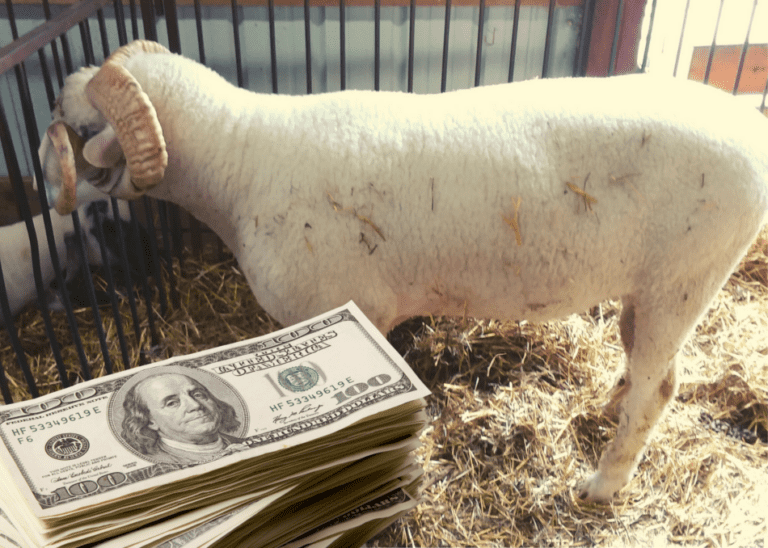Is Raising Your Own Lambs For Meat Worth It?
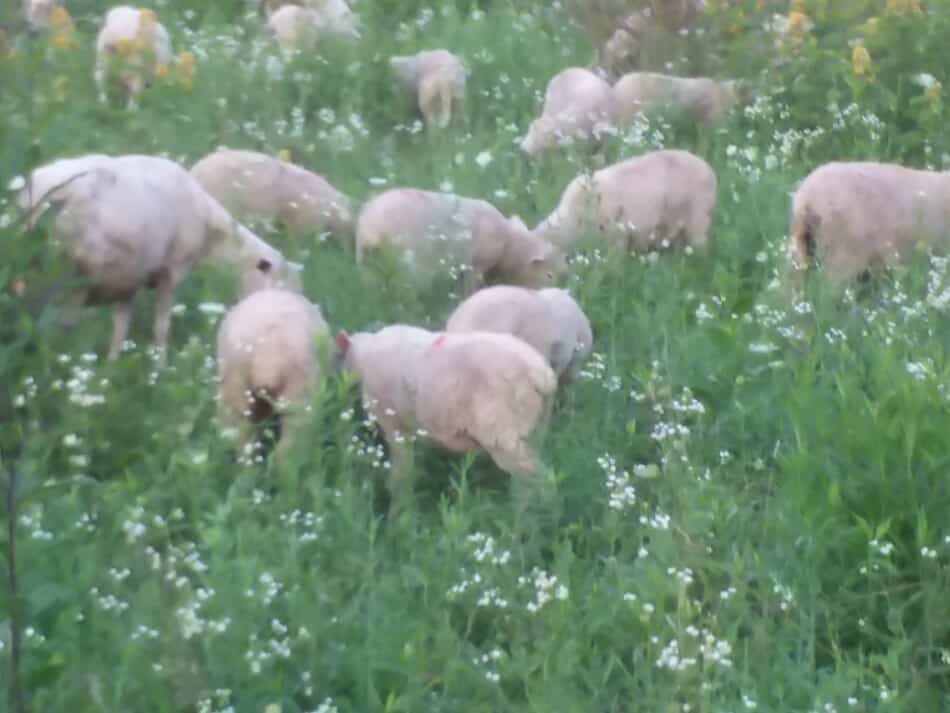
It’s hard to beat the feeling of satisfaction you get from a freezer full of packaged lamb! Your homegrown, best use of your backyard ever, bundles of nutrient dense goodness! That’s something to rave about!
It’s easy to get excited about the results and overlook the process. Time to get practical: What’s the total cost and will raising a few lambs be worth it?
Raising a lamb for the freezer will cost an average of $8.63 per pound of meat, with actual costs ranging from $7.50-9.75 per pound, depending upon feed costs.
We’ll go over the costs to get the lambs, amount of feed they will need (if you do not have enough pasture) and costs of processing your lambs, including what you would be paying if you purchased a grown lamb from someone else.
Pros And Cons Of Sheep gives you the good and the not so good of raising your own sheep.
| Item purchased | Cost |
| 50 pound feeder lamb | $120 each for spring lambs $180 each for fall lambs |
| Pasture to feed lambs | no additional cost |
| Hay to feed lambs | $63 each lamb |
| Processing fee | $90 |
| Pounds of meat (lamb processed at 80 pounds live weight) | 28 |
| Cost per pound of meat home raised pastured lambs | $7.50 |
| Cost per pound of meat home raised on hay lambs | $9.75 |
| Cost per pound of meat purchased grass finished lamb | $11.46 |
| Cost per pound of meat purchased market lamb from auction *you do not know how it was raised | $13.21 |
Get feeder lambs from a farm
To start off, you’ll need to find out where you can get feeder lambs in your area. Feeder lambs are weaned lambs that are sold off of the farm to be raised up to market size by someone else.

Know the going prices for lambs
If you live in an area with a livestock auction, you can easily see the prices that are current for your area. This is the best place to start your research.
You need to know these numbers and consider them to be a bottom level price. To be clear, you are using the auction prices as information on local lamb prices. You are not buying your lambs at the auction.
Why? Your best bet is to go to a farm and buy the lambs straight off of the farm, not after the stress of the auction barn.
Find lambs online or ask the extension office
If there are no auctions in your area, now you need to look around. Start with online ads and asking at the local feed or livestock supply store.
If there is a market lamb class at your local county fair, someone is raising lambs in your area! Call the 4-H extension or Farm Service Agency (FSA) office for your county and see what they can tell you.
A feeder lamb will cost about $100
As of May 27, 2020, the cost of a 50 pound feeder lamb in my area is $101.75, here’s a link to the market report. Here’s the math: 50 pound lamb x $2.035 per pound=101.75 I averaged the lamb weight and the price paid per pound.
The market report lists 40-60 pound lambs at $190-217. Don’t freak out, that price is per 100 pounds. It’s easier for me to think of it as $1.90-2.17 per pound live weight.
The cost you find will vary with the season and the condition and/or type of lambs being sold. You can easily find the current prices by checking online market reports.
Update: the cost of a spring born feeder lamb will be $120 (June 2, 2021) and a fall born feeder lamb is $176.25-198.75 (December 29, 2021) at Mt. Hope Auction.
Not sure how to read a market report, read my article How Much Will My Lamb Sell For? (How To Read A Market Report).
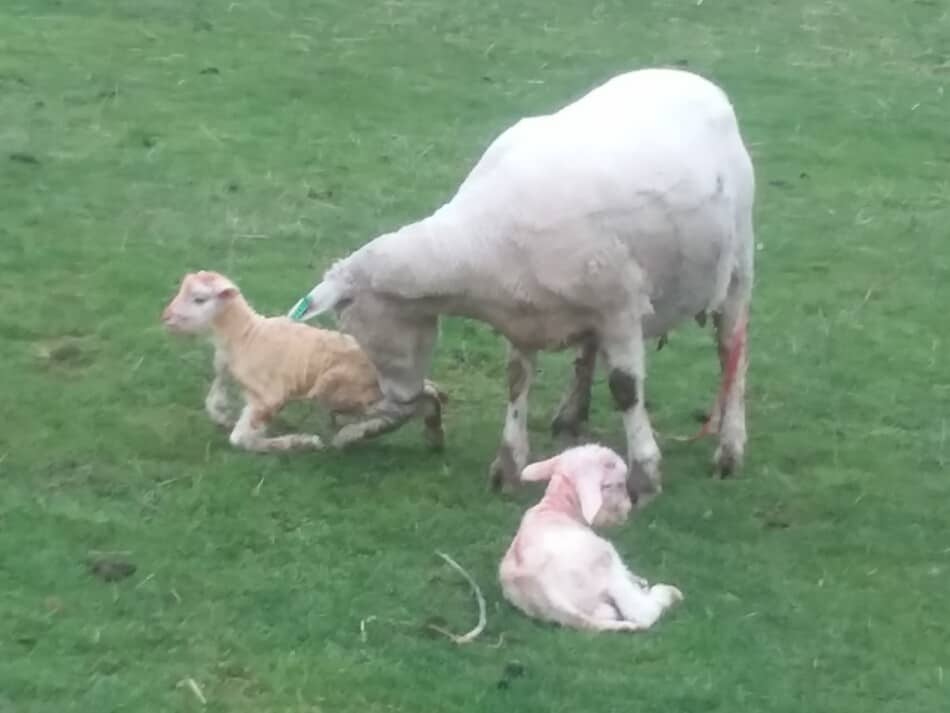
Ask how the lambs are raised and price
When you call about the lambs, ask about:
- the lamb’s age
- how they are being fed
- what they are being fed
- how long until the lambs finish (reach market weight)
- the price.
When you go to the farm, be on time, bring cash (exact amount) and don’t argue price.
I know in some areas, haggling over price is expected, here it is not. If you feel the price is too high for what you see or the lambs do not suit your needs, check out the auction or online ads.
Bring an extra large dog carrier
Have a way to transport the lambs.
Of course, if you have a trailer, use it! If not, you can be a little creative and still get those lambs to your house pretty easily.
This could be as simple as a large sized dog carrier or a tarped hog panel bent into a circle in the bed of your truck. If you have any friends who have goats, ask them what they use.
Feeding lambs = the biggest expense
This is the section where your costs may vary quite a bit from someone else’s. Feeding your lambs will be the biggest expense that you can control.
Raising lambs on grass has minimal costs
If you will be keeping your lamb on a fenced pasture that you have anyway, no worries. You don’t need to pay for the feed, just to put them on it!
You will need to be sure to have a salt block out for them to lick as they choose.
For anyone renting a pasture, you’ll have rent as an extra cost to include.
I consider grazing to be additional cost free. I didn’t say free. It’s more like you are using a resource, your lawn or pasture, that you already have but were not using fully.
Your lambs could easily be mowing and fertilizing your lawn or trimming back the grass in some hard to mow areas, like corners and around buildings.
Lambs can be raised on hay
If you are buying hay, the cost of raising your lamb will rise significantly. Your lambs needs forage of some sort, but do not need grain.
Your lambs will need to eat 3.5 pounds of high quality hay per lamb per day for the duration of the time you do not have good pasture for them. Or for the whole time, if you do not have any plans to graze them.
Let’s run through an example to show you how to calculate hay needs and costs.
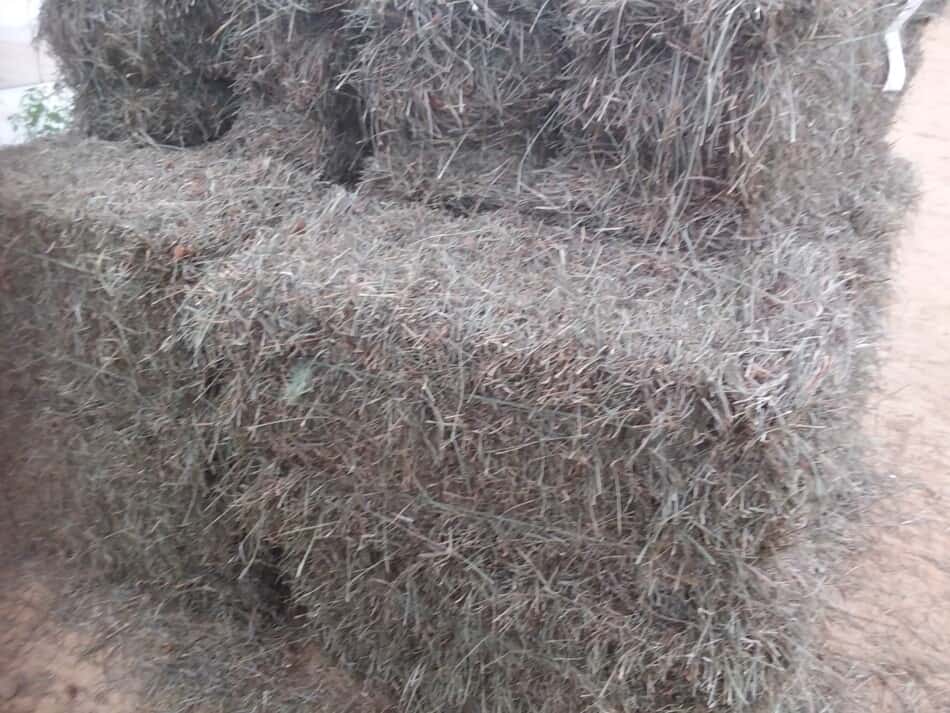
Most auctions sell hay with delivery included up to a certain mileage, 10 miles is common. This auction handles the hay sale differently. You buy the stack and transport it yourself.
Example: figuring the amount of hay needed for two feeder lambs
We’ll say you have two 50 pound feeder lambs that you plan to feed up to 80 pounds. This means you need to put 30 pounds of gain on each lamb.
Since your lambs will be eating forage only, they will be gaining .25 pounds per day each. To gain 30 pounds, these lambs will need to be fed for 120 days or 4 months.
They will be eating hay only for this 4 month period, so you’ll need 840 pounds of hay to feed them. How did I get 840 pounds of hay? Each lamb needs 3.5 pounds of hay for 120 days. 3.5 x 120=420 each, 840 for the pair
This would be 21 small square bales that weigh 40 pounds per bale. 840 pounds of hay needed divided by 40 pounds per bale=21 bales of hay
If your hay is $6.00 per bale (that’s $300 per ton) the lambs will eat $126 of hay. 21 bales x $6 each=$126 of hay to feed your lambs
Here’s an article by Penn State on feeding sheep, the part that applies to your lambs is at the very bottom, feeding replacement ewe lambs (.4 pounds of gain per day) or lambs being fattened (.6 pounds of gain per day).
Both of these rations include grain, if you are not feeding grain the daily gain you should use is .25 pounds per day.
Lambs need high quality hay
Lambs are ruminants, so all forage diets are what their digestive systems are designed to digest. Choose a nice first cutting grass hay or a second cutting grass or mixed hay.
Notice I wrote “nice” first cutting, this means made on time, high quality hay. Cheapo, late made hay or “this will work since you are just feeding sheep” hay is not going to cut it. You need nice stuff that has plenty of nutrients.
The only hay I would caution you against is anything that is a high percentage alfalfa. Mixes with alfalfa are super, 100 alfalfa is going to be to rich for your lambs and likely to cause digestive problems.
However, the rule that trumps all is: do what the sheep farmer that you bought the lambs from was doing (or as close as possible).
For example: If your lambs were eating lots of alfalfa before you got them, that’s what they are used to and it will probably work well at your place, too.
Choose High Quality Hay shows you the things we check to make sure the hay we buy is worth our money.
I don’t factor in my time as a cost, but you could
If you are planning on selling some of the lambs, you’ll need to be figuring in your time.
I don’t include time in my cost to raise type budgets. I know some folks disagree, that’s fine. My take is that I am using time that I have available for things that I consider important to me.
If you want to factor in your time, go for it! Be kind to yourself and plan in some wiggle room, all beginners will need more time the first round.
Cost to butcher a lamb is $90
The local meat processor that we use charges $90 for a lamb. This includes all of the processing to get from the live lamb to packages for your freezer.
No math needed, just $90 each, regardless of size or how you want the meat packaged.
Meat yield is based on live weight
The easiest way to figure out how much meat you will get from your lamb is to use 35.24% as provided by the Lamb Yield Guide (see the link below).
35.24% of live weight = take home meat yield
I like this method because it is simple, 35.24% of the lamb’s live weight will be what you can expect in meat for your freezer.
Let’s me show you what I mean with an example. We’ll use a 80 pound lamb (the same as the lamb in the example below). Multiply 35.24% by 80 to get 28.2 pounds of meat. Easy math, I love it!
Check out this Lamb Yield Guide, tons of information and great pictures. It is from England, so some of the phrasing is different that what you might be used to, but wow, it is packed with great information!
There is another way to calculate meat yield
For the more traditional way to figure out the amount of meat you’ll get from your lamb, we’ll go through the longer version next.
Your lambs will have a hanging weight of 50-53% of live weight, we’ll use 50% to keep the math easy. This means that an 80 pound lamb will have a hanging weight of 40 pounds.
So you can expect 40 pounds of meat, right? No. Hanging weight includes bones and fat, all of which you may or may not have the butcher keep in or on your cuts.
Your lamb will be custom cut to your specifications, so your choices will drastically alter the final pounds of lamb in the freezer.
You will get anywhere from 40-70% of hanging weight, depending upon your cut sheet (the instructions you give the butcher regarding cutting and packaging your meat).
Using the example above, with the 40 pound hanging weight, we’ll say 65% of the hanging weight ends up as packaged meat in your freezer. This would be 26 pounds of meat.
Here’s the math: 40 x 65%=26 pounds of freezer ready meat
Is My Lamb Ready To Butcher? gives you some things to look at to know if your lambs are freezer ready or not.
Home raised compared to purchased freezer lamb
Here’s where we start to compare what’s what. Your home raised lamb will cost you to purchase, feed and process. We’ll go with $100 each to purchase, $63 for hay ($126 for both) or $0 for your pasture and $90 to process.
This makes your lamb total $253 each if you buy hay and $190 if you raise the lamb on grass only.
Since you’ll be getting about 28 pounds of meat (actually 26-28.2 depending upon how you do the math), you can figure your cost per pound of meat.
For the pastured lamb: $190 divided by 28=$6.78 per pound of freezer ready lamb (updated to $7.50 with the $120 feeder lamb)
For the hay fed lamb: $253 divided by 28=$9.03 per pound of freezer ready lamb (updated to $9.75 with the $120 feeder lamb)
You could buy a farm finished lamb
Now that you know your costs, it’s time to compare to locally raised lamb that is available in your area to see if raising your own lamb is worth your time.
Do an online search to find lamb for sale near you. Be sure to compare lambs that are being raised in the same way that you would be raising yours.
I did a search and is the one of the results. You’ll notice individually packaged cuts are from $10 (ground lamb) a pound up to $20 per pound.
You’ll also notice that the price of a whole lamb is $5.75-6.00 per pound hanging weight, depending upon if you get a whole or half lamb.
For anyone who has stuck with me so far, you know that price looks good, really good. Like “less than you could raise a home raised lamb for” good.
But is it? No. This price only tells you part of the story, here’s why: hanging weight.
The $5.75-6.00 per pound price is based on hanging weight, the prices we figured are based on final packaged meat weight.
Selling the lambs based off of hanging weight makes a huge difference in final price! Stick with me here as we get to the price per pound of packaged meat.
Please note: selling meat animals by hanging weight is common practice. Nothing wrong with it, in fact, for the seller it makes quite a bit of sense.
I want you to know how to figure the costs accurately so you know how to compare purchased lamb to home raised lamb and decide for yourself where you want to spend your money.
Take home meat is 65% of hanging weight
For one of these lambs $5.75 pounds x 50 pound hanging weight =$287.50 plus an $85 processing fee, that makes the total you would pay $372.50.
As we discussed above, the hanging weight is different than the freezer ready packaged weight. This lamb would cost you more like $11.46 per pound. 50 pound hanging weight x 65%=32.5 pounds of meat, $372.50 divided by 32.5 pounds=$11.46 per pound
If you would by this lamb by the package you would pay $487.50 for 32.5 pounds of meat(I used a $15 average cost per pound).
You save $2.43-4.68 per pound with home raised lamb
These are the numbers you need to use to decide if raising your own lambs are worth it to you.
So far, it’s looking like raising your own lambs will get you amazingly tasty meat for $2.43-4.68 less per pound than if you purchased the lamb from someone else in 2020.
Updated savings on raising your own lamb are $1.71-3.96 with the $120 feeder lamb to start with.
You could buy a finished market lamb
Another option would be to buy a finished market lamb from someone who already has sheep. For this one, we go back to the market report for an idea of prices.
Most sheep farmers would be finishing lambs in the late summer to early fall. Look up a market report that would coincide with the time that you would be finishing your lambs.
This would be about 120 days or 4 months after you got the feeder lambs. We’ll use late October as our finishing time. This would be a common finishing time period for lambs born on pasture in May.
If you want to get your feeder lambs earlier in the year, check the prices for the time you prefer.
The market report for October 30, 2019 has 80 pound lambs selling for $172.50. This would make the cost per market lamb $138.00 each.
If you are not aware, this is a lower priced time due to an oversupply of market lambs. Price will be higher off season, but for now, it’s a buyers market.
Updated market lamb price is $280 each, as of December 29, 2021.
Buying and processing a finished lamb will be $13.21 per pound of meat
Using this price of $138.00 + $90 processing fee=$228, with the same meat yield of 28 pounds you would be getting your meat for $8.14 per pound in 2020.
Updated price per pound for a finished market lamb purchased in December at Mt. Hope Auction (where we sell our lambs) then processed would be $13.21 per pound of meat, which is $280 for the lamb plus processing of $90.
This is with you going to the auction, buying the lamb and hauling it yourself. If you have an auction buyer get one for you, there will be a fee for this service plus a fee for trucking the lamb to the processor.
Please note, you do not know how this lamb was raised, all you know is what it looks like at the sale. If you are looking for a lamb raised in a specific way get one from a farm that finishes lambs or raise your own.
Lambs need grazing and no stress
Living in an area that is “sheep friendly” will help you when raising a few lambs for the freezer. So what is a sheep friendly area? Grass, low stress, no predators.
First off is the grass, sheep eat grass and other plants that are commonly grown in backyards or pastures. Do you have grazing available for your lambs?
While grazing is not mandatory, we’ll go into your other options next, it is the biologically appropriate and most economical way to feed your lambs.
Feeding them anything other that grass will cost you more, as far as out of pocket expenses, like buying hay.
Sheep For Business goes over the things you need to consider when you want to raise sheep as a business.
Low stress living is a huge deal for sheep. They are naturally over reactors to any change or stress. As we all know, stress negatively impacts growth and health. Not good.
At the very least, all of the time that you lambs spend distracted by the neighbor dog, or what ever the stressor may be, is time that they do not spend eating and growing.
Predators are a biggie for sheep and very area specific, meaning in some parts of the country predation is a huge problem, in other parts, while still possible, much less so.
For us, our biggest predation problems happen when the lambs are newborn to a few days old. This is the time that they are small enough to be carried off by that fox we keep seeing or one of the coyotes we hear howling.
As the lambs get older, the predation gets less likely, but you still need to be aware of the potential for predation in your area.
We are past most predator problems when the lambs are a week or so old. Some areas of the country, you never get past the predator problems.
The simple fix here would be to lock the lambs in a shed at night then let them out each morning. I know it’s a bit more work, but you’ll know they are safe!



